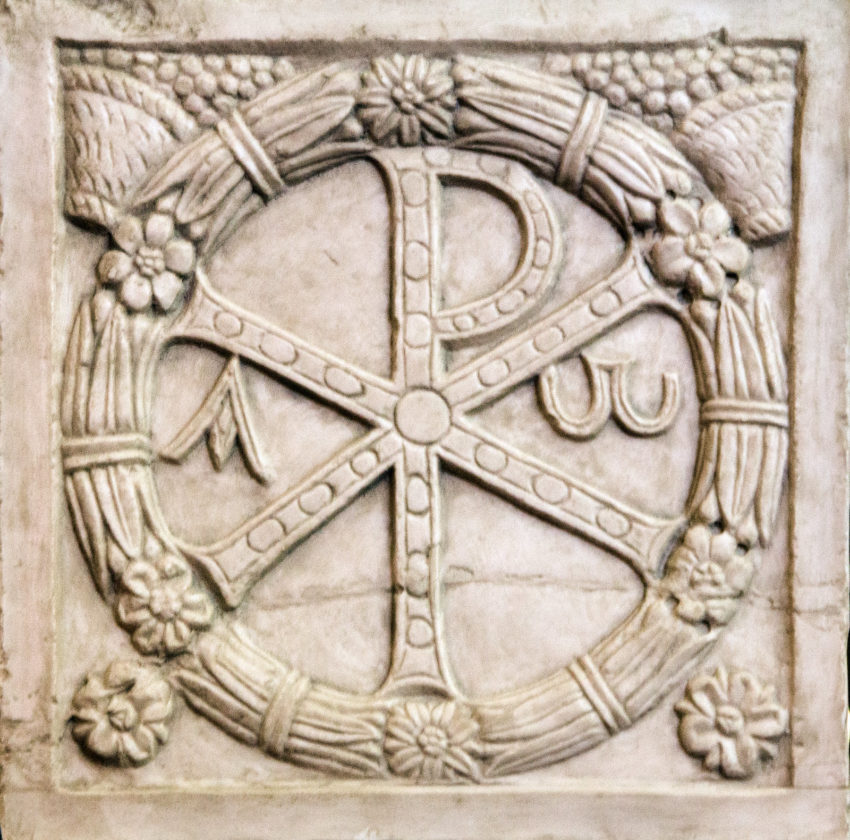(Excerpt from Graphic Design & The Prophetic)
The first recorded, intentional use of “graphic design” in the Christian faith is recorded in the discourse of St. Clement of Alexandria’s work, “Christ, the Instructor.”[1] Clement wrote, “And let our seals be either a dove, or a fish, or a ship scudding before the wind, or a musical lyre, which Polycrates used, or a ship’s anchor, which Seleucus got engraved as a device; and if there be one fishing, he will remember the apostle, and the children drawn out of the water.”[2]
This group of Christians put great thought in creating graphics to identify their specific ministry purpose. Best of all, they called their designs seals. For those who didn’t know, this is where certain symbols we see associated with Christianity began their journey down through history.
Can you see the ministry of remembrance in that? What about the visual memorial?
Interpreting Designs
Quite a few of those designs would take on varying interpretations throughout the centuries. We learn that some were mixed with pagan symbolism originally. According to scholars, this happened either out of their confusion concerning the faith which was introduced in a completely pagan culture; or as camouflage to prevent “detection” by those persecuting the early church.[3]
The “disguise,” as it was called, contained symbols that a “Christian” could identify but were hidden from a pagan.[4] As Christianity spread and the Gospel became more widespread, many of those pagan symbols would fade away and a pure symbolism would emerge.[5]
Today, there are so many insane, wild stories running around the Christian faith concerning why pagan symbols are mixed with Christian symbols.
But when we really grasp that the Christian faith was “completely brand new” in the world, we can see how new converts may have missed the mark in representing things well – especially before they were thoroughly rooted themselves.
Quite a bit can be missed when you are running for your life after a forbidden conversion to Christianity. We can also understand the need to HIDE SYMBOLS in existing pagan symbols as a method of protection. As we move through history in general, hiding symbols was a strategy for many oppressed groups to code messages. It does not necessarily depict demonic activity, but WISDOM.
Overcoming Ignorance
We need to EXPAND our thinking on these issues with accurate research. While there is some mixture in the early Christian faith as groups continued to split and do their own thing, we bear the burden of seeing a broader picture.
Why walk in ignorance unnecessarily?
How much lighter would we be by letting go of some of these misconceptions and placing them in a historical limelight that is more plausible than the “fake news” circling the web. If we understand how much its taken to work out our faith, HOW MUCH MORE could it have taken for those pioneering teams.
Some of the most well-known Christian symbols include the:
- Chi-Rho: Chi and Rho are the first two letters (ΧΡ) of “Christ” in Greek ΧΡΙΣΤΟΣ (Christos). See featured image in this post. Sometimes, it is called the Monogram of Christ or Chrismon or Labarum.[6] While it was used very early by persecuted Christians in the catacombs, when Constantine I (Roman numeral I) was struggling to become emperor, he used the symbol at the front of his armies and was victorious.[7]
- Anchor: The anchor was an early Christian symbol commonly found in the Roman catacombs as a symbol of the hope we have in Christ beyond this life, and is a fitting inscription for a Christian tomb.[8] It is based on Hebrews 6:19-20.The full list of the earliest graphic designs are reviewed in the book, Graphic Design & The Prophetic.
[1] Valiant, James S, C. W. Fahay, “Creating Christ: How Roman Emperors Invented Christianity,” https://books.google.com/books?id=PND_DAAAQBAJ&printsec=frontcover&source=gbs_ge_summary_r&cad=0#v=onepage&q=let%20our%20seals&f=false
[2] Ibid.
[3] Ralph F. Wilson. “Early Christian Symbols of the Ancient Church from the Catacombs,” Early Christian Symbols, http://www.jesuswalk.com/christian-symbols/
[4] Ibid.
[5] Ibid.
[6] Ibid.
[7] Wilson, “Chi Rho, Chrismon, Monogram of Christ, Labarum,” http://www.jesuswalk.com/christian-symbols/chi-rho.htm
[8] Ibid.

